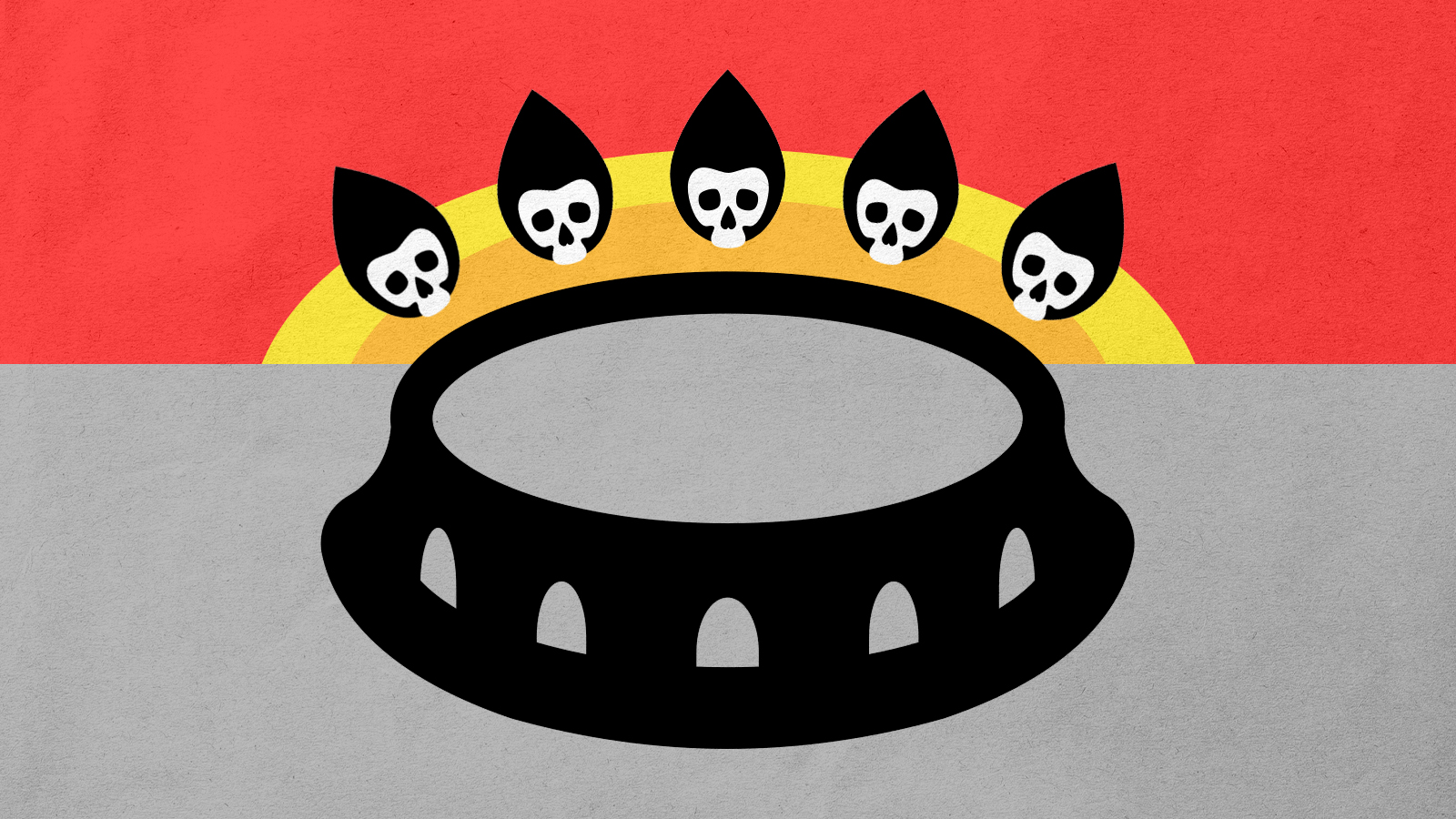Your gas stove is polluting your home. There's a better way.
Time for induction?


When you make a purchase through links on our site, we may earn a commission
Many Americans love to cook on gas — including myself, when I got my first experience of doing so after many years cooking on electric. But alas, gas cooking is polluting, dangerous, and fuels climate change.
Gas stoves have got to go. Luckily, there is a cutting-edge technology to replace them that is better in almost every way.
The Week
Escape your echo chamber. Get the facts behind the news, plus analysis from multiple perspectives.

Sign up for The Week's Free Newsletters
From our morning news briefing to a weekly Good News Newsletter, get the best of The Week delivered directly to your inbox.
From our morning news briefing to a weekly Good News Newsletter, get the best of The Week delivered directly to your inbox.
The most convincing argument against gas stoves is straightforward: They poison the air in your home. Burning natural gas or propane creates nitrogen oxides, carbon monoxide, formaldehyde, and particulate pollution. In unventilated spaces especially, this can lead to vastly greater concentrations of these toxic chemicals — up to 100 times the outdoor level, as shown in a literature review from the Rocky Mountain Institute — which are a risk factor in asthma, heart disease or other cardiovascular problems, and other illness, particularly for children.
To be fair, the research on gas stoves directly causing asthma or other respiratory problems is at this point still being ironed out. But the circumstantial case is obvious and convincing — at bottom, anyone who studies the chemistry of combustion will understand intuitively that having an open flame in an indoor space is an extremely bad idea. Vent hoods can help with pollution, but they're not completely effective, they dump your heated or cool air outside, and many homes don't have them in any case.
Gas stoves are also a source of greenhouse gas emissions. Now, they don't emit nearly as much as furnaces or water heaters (since they are not used nearly as often), but they also tend to leak more unburned methane, which is 86 times as effective as carbon dioxide at trapping heat over a 20-year period. Every little reduction in greenhouse emissions helps fight climate change.
I can already hear the reaction from some quarters — but electric stoves are terrible! They're so much clunkier and more inconvenient than gas! And it's true, radiant electric stoves using circular or coil heating elements are annoying. They're slow to both heat and cool down, making fine temperature control more difficult (though for my money I would still prefer them over gas, given the health concerns).
A free daily email with the biggest news stories of the day – and the best features from TheWeek.com
However, there is a better way: induction electric stoves. These use electromagnetism to directly heat up a pan, rather than getting an element hot through electrical resistance and then heating up the pan that way. This is not only faster than radiant heating, it is faster than gas — much faster, in fact. Heating up a quart of water via induction can take something like one-fourth the time. Speed and direct energy delivery also make induction much more precise — very useful for frying, making candy, or anything else requiring accurate temperatures.
Induction is also much more efficient, because the energy is delivered directly into the pan itself. That in turn cuts down on ambient cooling needs, since less heat leaks into the cooking space — meaning less energy used on air conditioning, and more comfortable kitchens (especially in busy restaurants).
Now, there is a downside to induction in that a pan needs to react to the electromagnetic field (so it can't be all aluminum, for instance). Anything with a good portion of iron in it works though, so stainless steel or good old cast iron works fine (if a refrigerator magnet sticks to it, it will work). And that downside comes with a safety benefit — anything that is not magnetically active will not be affected by the field. You can turn it up all the way, put your hand directly on the range, and nothing will happen.
Chefs who have cooked on gas their entire lives have been grudgingly won over to induction. There is a solution even for wok cooking, which needs a curved heat source — a wok-shaped induction hob.
Induction electric stoves seem to be finally making serious inroads in the American market after many years of slow uptake, as people cotton on to the danger of gas and the nifty properties of induction. But the government could speed things up mightily with subsidies and regulation. If the state provided a big credit for property owners to replace their gas stoves, with particular attention on older stoves in apartment buildings (they often leak or burn very inefficiently), and set up new regulations on the amount of air pollution appliances could produce that would gradually tighten over time, gas cooking could be replaced entirely. We would all breathe a lot easier, too.
Ryan Cooper is a national correspondent at TheWeek.com. His work has appeared in the Washington Monthly, The New Republic, and the Washington Post.
-
 Political cartoons for January 4
Political cartoons for January 4Cartoons Sunday's political cartoons include a resolution to learn a new language, and new names in Hades and on battleships
-
 The ultimate films of 2025 by genre
The ultimate films of 2025 by genreThe Week Recommends From comedies to thrillers, documentaries to animations, 2025 featured some unforgettable film moments
-
 Political cartoons for January 3
Political cartoons for January 3Cartoons Saturday's political cartoons include citizen journalists, self-reflective AI, and Donald Trump's transparency
